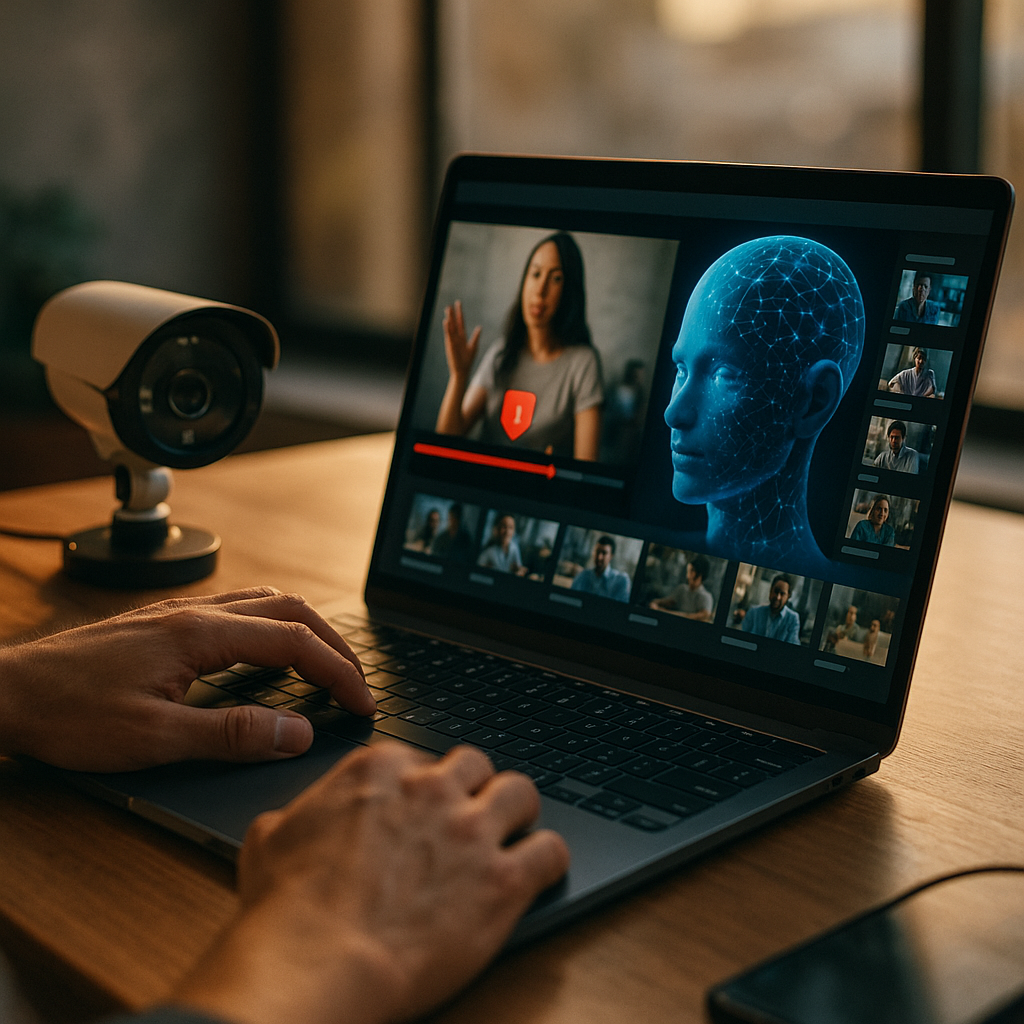AI for frame-by-frame video analysis is transforming how brands protect their reputation in online video environments, extending brand safety practices far beyond simple keyword detection. As advertisers grapple with the complexity and scale of video content, advanced AI offers unprecedented nuance and precision—discover how this cutting-edge approach is changing the ad safety landscape in 2025.
The Evolution of Brand Safety: From Keywords to Video Contextual Analysis
Brand safety has traditionally relied on keyword filtering and basic metadata analysis to avoid unsafe content. However, this approach often overlooks risks embedded in visuals, audio, or context. In 2025, with the exponential growth of user-generated video platforms, advertisers recognize that textual signals alone cannot capture issues like hate symbols, graphic violence, or misleading visual cues that jeopardize brand integrity.
Advanced AI technologies now analyze entire video frames, examining action, sentiment, and even visual style. This provides a deeper layer of brand safety assurance, helping brands confidently advertise without exposure to inappropriate contexts. As a result, brands are moving toward proactive, context-aware solutions that ensure their values are respected on every platform.
How Frame-by-Frame Video Analysis AI Works
AI-driven frame-by-frame analysis dissects video content by evaluating every individual image, not just relying on surrounding text or captions. Using deep learning and computer vision, these algorithms:
- Identify faces, objects, and symbols: Detect potentially harmful or controversial imagery.
- Analyze motion and scene transitions: Spot violent acts or abrupt changes in tone.
- Transcribe audio content: Combine speech recognition and sentiment analysis for context-rich understanding.
- Detect on-screen text: Recognize slurs, hate speech, or sensitive information embedded in visuals.
This holistic approach enables unprecedented precision in identifying risks well beyond the reach of keywords, such as implicit hate, self-harm references through gestures, or misleading brand imitation within visual content.
Case Studies: Ensuring Brand Protection in 2025’s Video Ecosystem
Recent deployments of frame-by-frame video analysis AI show compelling results for brand safety. According to 2025 data from a leading video advertising network, advertisers using visual AI filters reduced brand safety incidents by 70% compared to keyword-only models.
- Case Example: A global sportswear brand avoided an ad placement next to viral videos containing hate symbols, which evaded textual detection but were flagged by AI through symbol recognition.
- Case Example: A financial services firm’s ad campaign used AI to skip videos with background scenes of violence or illegal behavior—protection that keyword filters would have missed.
These insights highlight how frame-level AI not only protects reputation but also increases advertiser confidence to reach wider audiences.
Benefits of AI-Based Frame-by-Frame Video Insights for Advertisers
Frame-by-frame AI video analysis provides advertisers with several crucial advantages in 2025:
- Enhanced accuracy: By understanding visual context, AI flags subtle and emerging risks undetectable by text-based filters.
- Real-time scalability: Automated analysis can review millions of video hours daily, matching the scale of today’s platforms.
- False positive reduction: Context-aware AI distinguishes between harmful and benign content, reducing unnecessary ad exclusions and maximizing reach.
- Compliance and transparency: Detailed reporting keeps brands aligned with evolving safety regulations and internal policies, building greater trust with regulators and partners.
As marketers grow more sophisticated and responsible regarding brand adjacency, these benefits are critical for both reputation and revenue growth.
Challenges and Future Directions for AI in Brand Safety
While AI-powered video analysis marks major progress, challenges remain. Algorithmic bias, rapidly evolving internet culture, and adversarial content creation can test the limits of detection tools. In 2025, leading providers constantly update models and blend AI with expert human oversight to stay ahead of new threats.
The future promises even greater semantic understanding, multi-modal analysis (image, motion, audio, and metadata integration), and customizable sensitivity settings per brand. Emerging standards in explainable AI also promise increased transparency, allowing brands to understand exactly why certain content is flagged, helping to refine outputs for aligned safety goals.
Integrating Frame-by-Frame AI into Your Brand Safety Strategy
For advertisers and agencies aiming to adopt frame-by-frame video analysis AI, it’s crucial to start with clear risk definitions and value triggers unique to the brand. Most leading ad platforms in 2025 now offer built-in or third-party integrations capable of customizing parameters for campaign-specific needs.
Best practices include:
- Regularly auditing your ad placements: Ensure AI filters are behaving as expected.
- Collaborating with trusted partners: Choose solutions with proven, transparent methodologies and up-to-date model training.
- Balancing automation and human review: Periodic spot-checks by experts complement AI and address nuanced or borderline content.
By embedding these AI tools in your workflow, you’ll achieve safer, more audience-aligned advertising across all video formats.
FAQs: AI and Frame-by-Frame Video Brand Safety
- What is frame-by-frame video analysis in the context of brand safety?
Frame-by-frame video analysis uses AI to inspect each visual frame of a video, detecting unsafe imagery, context, or audio that keyword and metadata filters may miss. - How does it differ from traditional keyword filtering?
While keyword filters rely on textual clues, frame analysis evaluates visuals and audio, identifying risks like violent images, hate symbols, or nonverbal gestures undetectable by words alone. - Is frame-by-frame AI analysis scalable for global campaigns?
Yes, modern AI models process millions of video hours daily, making them suitable for brands running global, multi-language campaigns across user-generated and premium video platforms. - What risks can still evade frame-by-frame AI?
Rapidly evolving memes, coded symbols, or highly nuanced cultural content might still challenge current AI detection, which is why leading solutions blend AI with human review. - How can brands get started with this technology?
Brands should partner with platforms or vendors offering AI video intelligence tools and customize analysis rules to align with their unique safety needs and audience sensitivities.
AI for frame-by-frame video analysis gives brands the power to safeguard their reputation in dynamic video environments, going far beyond keyword protection. By embracing advanced, context-aware tools, advertisers ensure their values are respected everywhere their message appears—empowering them to grow with confidence in 2025 and beyond.
